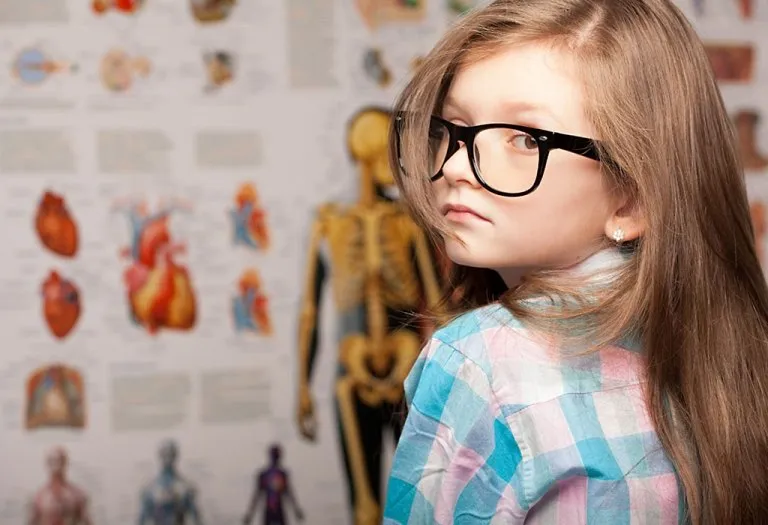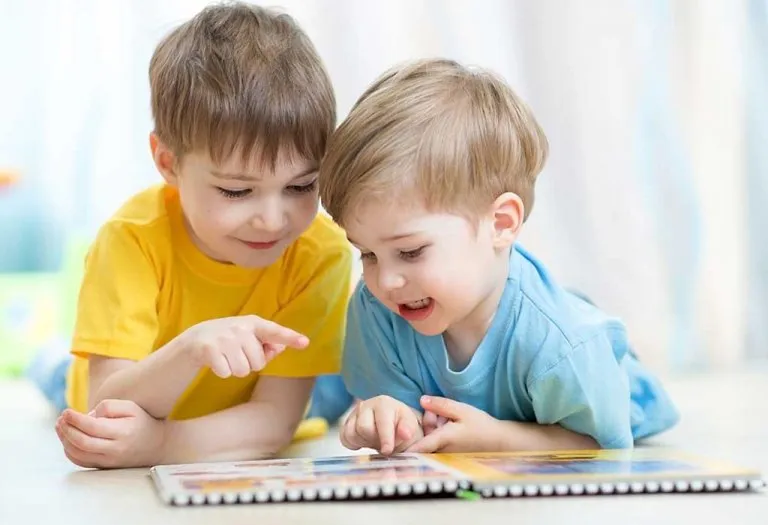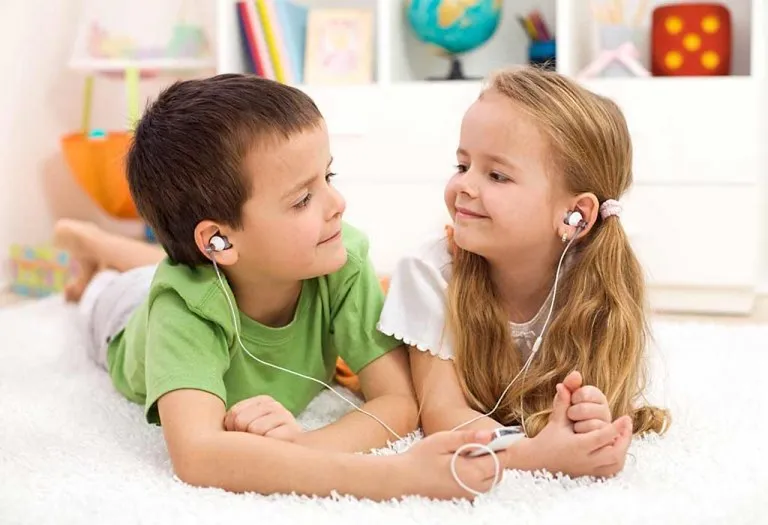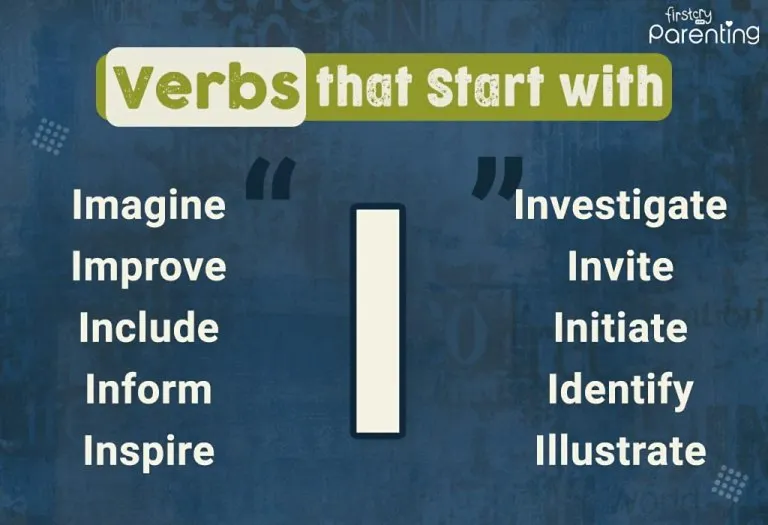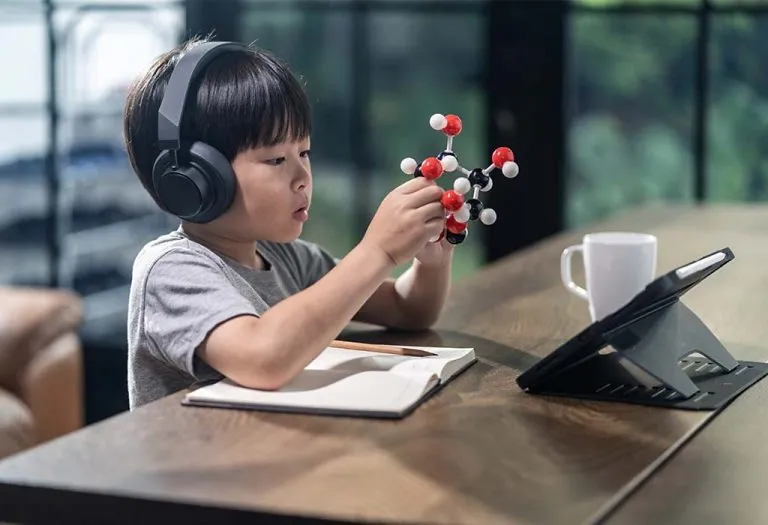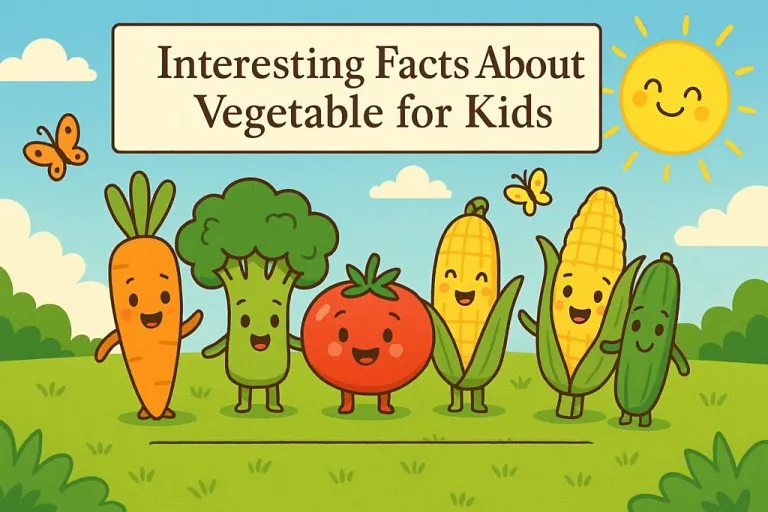26 Interesting Human Body Facts for Kids
Children are always curious about learning new things and are open to exploring and understanding new concepts readily. Reading facts about the human body, space, and history is always a good thing.
The human body is a complex composition which has several interesting aspects and capabilities that can stretch beyond our imagination. Human body facts for kids can be taught in several fun ways, like quizzes and card games. Here are some fun facts about the human body that will help your child think about the human body with a better perspective. These facts on human body systems for kids will surely bring a good change in your buttercup!
What Are the Main Parts of the Human Body?
The skeleton, organs, muscles, skin, and nervous system make up an entire human body. Let’s learn about them in detail:
1. The Skeleton
With more than 200 bones in a super sturdy framework, the skeleton kind of works like the building blocks of a human body.
2. The Nervous System
Ever wonder how we feel stuff, think, or move around? That’s the nervous system in action – it’s like our body’s texting system that sends messages back and forth in nanoseconds. The nervous system is made up of the brain, spinal cord, and nerves, making sure everything’s in sync.
3. Muscles and Tissues
Muscles and tissues together help with the movement of the human body. Whether it’s the big, strong muscles in our legs and arms or the tiny ones in our fingers, they’re what let us do all sorts of stuff like running, jumping, and even doodling.
4. Organs
Organs are one of the most vital parts of the human body that are shielded by the skeleton, as they are highly sensitive. Organs, including heart, brain, liver, lungs, kidney, etc., all have separate important functions to perform to keep the human body alive and healthy
5. Skin
Skin is like our body’s superhero cape – it’s the biggest organ that keeps us safe from germs, helps us feel things, and even makes sure we don’t get too hot or cold.
Amazing Facts About the Human Body for Children
There are plenty of amazing and eye-opening facts about the human body for kids. Indulge your little ones in a super-exciting ride of human body facts. These fun facts about the human body for kids are going to be thrilling as well as educational for your children. Here are some of the top 26 human body facts for kids (1):
- The human body requires food, air and water. Food provides energy to the body. Air provides oxygen to the body for breathing. Water helps in keeping the body moist.
- A human body grows more during the initial two years of its life than during the rest of your life.
- The human brain is about three times bigger than any other animal’s brain of our size.
- It takes an average human body about twelve hours to digest the eaten food completely.
- We know that all human beings have unique fingerprints, but did you know that human beings also possess unique tongue prints?
- Infants blink only once or twice in a minute, while an adult blinks about 10 times every minute.
- The ears and noses of humans continue to grow throughout their entire lives.
- A human heart beats about 100000 times in a day, 36500000 times in a year and over a billion times in 30 years.
- The brain utilizes over twenty-five per cent of the oxygen used by the human body.
- A sneeze can travel at a speed of more than 161 kmph.
- The heart is one of the most powerful organs in the human body. The blood pressure produced by the human heart is capable of squirting blood about nine metres in the air.
- The average heart of a male adult should weigh about 300 grams. Meanwhile, the average heart of a female adult should weigh about 250 grams. The average heart of a baby weighs only about 100 grams.
- The largest muscle in a human body is in the buttocks, it is known as ‘gluteus maximus’, which helps us to lift our legs.
- The smallest muscle in a human body is known as the ‘stampedius’ and it is only 1.27 mm long. This muscle is situated in the middle ear, and it helps stabilize the smallest bone in the human body.
- The average temperature of a normal human body is 98.4 degrees Fahrenheit or 36.9 degrees Celsius.
- A fully grown human body has 206 bones. A newborn baby has more than 300 bones. The bones of the newborn baby fuse together as they grow older. In the end, the count of the bones is always 206.
- The fingernails of an average human being grow about 1.4 to 10 cm per year (0.5 to 4 inches per year).
- If we line up all the DNA from the cells of a human being, it would spread to the moon and back to the earth about 3000 times.
- Did you know that 99 per cent of the DNA is the same in all human beings?
- An average human being can live for about three minutes without the supply of oxygen, three to five days without water, and about forty days without food. Warning: Do not try to test any of the above-mentioned limits.
- The human eye has the remarkable ability to process more than 36,000 units of information within the span of an hour.
- A human’s sense of taste is intricately connected to your sense of smell.
- Measuring approximately 22 feet in length, the small intestine plays a crucial role in digestion.
- Skin is the human body’s largest organ, serving as a protective barrier against external factors.
- The stomach uses hydrochloric acid to aid in the breakdown of food particles.
- Babies do not shed any tears until they are one month old.
FAQs
1. How does the brain work?
The human brain is the command centre of our body. According to Johns Hopkins Medicine, the brain communicates through various chemical and electrical signals that traverse the body using neurons (2). Various signals regulate different bodily functions, and the brain interprets each accordingly. For instance, certain signals induce feelings of tiredness, while others are associated with pain perception.
2. Why do we need to sleep?
According to the National Heart, Lung, and Blood Institute, sleep is highly essential for a healthy body and mind (3). It helps the brain function properly, concentrate, filter out unwanted information, and build muscles. While adults need at least 7 hours of sleep, babies below 5 years, young children, and teenagers need significantly more sleep for their proper bodily function and development (4).
3. How do we feel sensations like touch, taste, and smell?
The nervous system uses electrical signals to send messages back and forth between the brain and the human body. This is how we feel all kinds of emotions and sensations like taste, smell, sight, touch, and even think.
4. How does the skin protect the body?
The skin protects the human body’s organs, bones, nervous system, and more from heat, cold, and damage by serving as a protective barrier.
There are many more facts about the human body that your child might find very interesting. Knowing these fun facts helps children in developing the way they think about their own bodies. It can also help them explore and understand the various parts of their body as they grow and develop.
References/Resources:
1. 15 Facts About the Human Body!; National Geographic Kids; https://www.natgeokids.com/nz/discover/science/general-science/15-facts-about-the-human-body/
2. Brain Anatomy and How the Brain Works; Johns Hopkins Medicine; https://www.hopkinsmedicine.org/health/conditions-and-diseases/anatomy-of-the-brain
3. Why Is Sleep Important?; the National Heart, Lung, and Blood Institute; https://www.nhlbi.nih.gov/health/sleep/why-sleep-important
4. Consensus Conference Panel; Watson. N. F, et al.; Recommended Amount of Sleep for a Healthy Adult: A Joint Consensus Statement of the American Academy of Sleep Medicine and Sleep Research Society; J Clin Sleep Med.; PubMed; https://pubmed.ncbi.nlm.nih.gov/25979105/; June 2015
Also Read:
Science Facts for Kids
Space Facts for Children
Animal Facts for Kids
Facts about Plants for Children
Was This Article Helpful?
Parenting is a huge responsibility, for you as a caregiver, but also for us as a parenting content platform. We understand that and take our responsibility of creating credible content seriously. FirstCry Parenting articles are written and published only after extensive research using factually sound references to deliver quality content that is accurate, validated by experts, and completely reliable. To understand how we go about creating content that is credible, read our editorial policy here.





